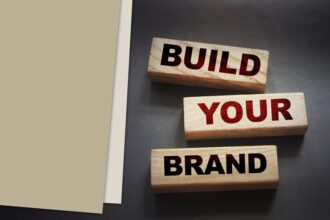Hey there, Startup Ninjas! Are you ready to dive headfirst into the exciting world of product development? At InsiderBlog.co.uk, we’re like your trusty lab partners, here to guide you through the experiments and discoveries of creating a product that people will love.
Imagine you’re an inventor, building a super cool robot or a spaceship that can fly to the moon. That’s what product development is all about! It’s about taking an idea and turning it into something real, something that can solve problems and make people’s lives better.


But just like any great invention, product development takes time, effort, and a whole lot of testing. It’s like baking a cake – you need the right ingredients, the right tools, and a whole lot of patience.
So, grab your goggles and your lab coats, Startup Ninjas, and get ready to explore the fascinating world of product development! With our product development tips for startup, you’ll learn how to create a product that’s not only amazing but also helps your startup soar to new heights.
“The best way to predict the future is to invent it.” – Alan Kay and Peter Drucker
Product Development Power-Ups!
- Do your homework: Just like a detective investigates a case, you need to do your research to understand your market and your customers.
- Make a plan: Just like building a LEGO castle, you need a blueprint for your product. That’s where a financial model comes in!
- Build a super team: Just like a superhero team needs different powers, your startup needs a team with different skills.
- Find the right factory: Just like finding the perfect playground, you need to find the right manufacturer for your product.
- Know your customers: Just like a superhero knows who they’re trying to protect, you need to understand your target audience.
- Be strong and flexible: Just like a gymnast doing flips and twists, you need to be resilient and adapt to challenges.
- Believe in yourself: Just like a superhero believes in their powers, you need to trust your vision for your product.
Do Research for Market, Customers, and Competition


Doing market research is key for startups making physical products. It helps understand the market, customers, and rivals. This way, startups can build a strong business model.
Startups should check for existing intellectual property (IP) early. This ensures they can make what they want. Using market sizing tools and doing IP checks helps find their unique solution and audience.
Gain Deep Understanding of Your Market
Market research includes interviews, surveys, and analyzing industry data. It’s split into primary and secondary research. Primary research gets direct data from people. Secondary research uses existing data to study market trends.
- Primary research gives insights from the target audience. Secondary research shows market position and competition.
- Finding the right people to research is key. It helps in making products and marketing plans.
- Getting people to participate through word of mouth or social media helps. Offering money can also help get honest feedback.
Good market research helps startups improve their products and attract investors. It gives them data to support their business ideas.
Ensure Product is Manufacturable
Many innovators start with a product idea. But they don’t know if it can be made well. The design for manufacturing (DFM) approach helps with this.
This method is key for a product-based business to succeed. It makes sure the product can be made and sold well.
Design for Manufacturing (DFM) Approach
A good business aims to make a profit of 20-30%. This is from selling the product. If the profit is less than 15%, it might not be worth the effort.
- Look closely at the cost of making the product. This includes materials, labor, and overhead.
- Make the manufacturing process better to save money and time.
- Think about how to make the product during the design phase.
- Work with manufacturers to solve any making problems.
Using DFM, startups can make products that customers want and can make money from. This makes the business profitable and can grow.
Know Your Numbers and Financial Model
Creating a detailed financial model is key for product startups. Founders need to watch their profit margins closely. They should aim for 20-30% to keep their business growing.
It’s also vital to know about distribution models and markups. This helps predict if the startup can make money.
Watch Profit Margin Calculations
If profit margins are over 30%, the business might grow more. But, it will face more competition. It needs strong ideas and plans to stay ahead.
Understanding financial modeling helps startups plan for the future. They can keep enough money and reach their goals.
Understand Distribution Models and Markups
- Startups should think about how much they charge, who they sell to, and where they sell. This affects their money.
- Looking at how much it costs to get customers and how much they spend over time helps with profit margin.
- Using real money results in the model helps make future plans more accurate.
By getting good at numbers and financial models, startups can make smart choices. They can get investors and stay strong in the long run.
Build Team with Complementary Skills


Building a team with different skills is key for startups to do well. Founders need to know their own weaknesses. They should gather a team that can handle the product development better.
A team with various skills can tackle more tasks. This leads to more innovation and solving problems.
Team members with different skills can make the startup better. They can help the startup stand out in the market. The usual team has a hacker, a hustler, and a designer.
Having two to four founders is best. They should have passion, determination, and agility. Trust and respect among founders are very important.
It’s good to check how tasks are done often. This helps the team work well together. Startups need skills like problem-solving and creativity in all roles.
Having a diverse team makes things more creative. It helps solve problems and innovate.
Vet Potential Manufacturers
Startups need to find the right manufacturer for their product. They should look for a balance. Not too small, not too big.
They should check if the manufacturer is a good match. Also, they should think about the minimum order quantity (MOQ) that works for both.
Evaluate Manufacturer Fit
Startups must check if a contract manufacturing partner fits their needs. They should look at the manufacturer’s skills, quality, and flexibility. It’s also important to see if the manufacturer can grow with the startup.
- Check the manufacturer’s production skills and size
- Look at the quality control and standards
- See if the manufacturer can change with the startup’s needs
- Check the manufacturer’s financial health and growth ability
Consider Minimum Order Quantity (MOQ)
The minimum order quantity (MOQ) is key when choosing a manufacturer. Startups need to make sure the MOQ fits their business. A good match helps keep the supply chain strong.
- Learn about the manufacturer’s MOQ
- Make sure the MOQ fits the startup’s needs
- Work out a MOQ that works for both
Tailor Value Proposition for Target Audience
Making a great value proposition is key for startups to succeed. It’s not just about what your product or service does. It’s about knowing your audience well and making your offer just for them.
Every group of customers has their own needs and wants. By making your value proposition special for them, you show you really get what they’re looking for. This makes your startup more appealing, which can lead to more customers and sales.
- Value propositions should have three main parts: solve the problem, show it’s urgent, and explain what’s unique about your offer.
- A value proposition is a short statement that tells buyers why they should choose you over others.
- Good value propositions are clear, backed by evidence, and show why your solution is the best.
To make a value proposition that targets your audience, do your homework. Study your market, competitors, and what your customers need. Find out what problems they face and what they want. Then, create a value proposition that shows how your startup solves their problems and offers great value.
Remember, your value proposition can make or break a sale. Spend time making sure it speaks to your audience and makes your startup stand out.
Be Resilient through Ups and Downs


The journey of a startup founder is full of ups and downs. Being resilient is key for any entrepreneur. Bill Fienup, co-founder of mHUB, says it’s important to keep going through tough times.
Startups face many challenges, like finding money and dealing with rules. They also have to handle supply chain issues and listen to customer feedback. Fienup says those who can keep going through these challenges and roadblocks are the ones who succeed.
Stick Through Challenges and Roadblocks
Being resilient means more than just bouncing back. It’s about staying focused and adapting to new situations. Fienup tells startup founders to see every challenge as a chance to grow and get stronger.
- Develop a problem-solving mentality to tackle obstacles head-on
- Cultivate a flexible mindset that allows for strategic pivots when necessary
- Surround yourself with a supportive team that can provide guidance and encourage perseverance
- Celebrate small wins and milestones to maintain momentum and morale during difficult times
By facing the ups and downs of being a startup founder, founders can build the resilience and grit needed to make their vision real.
Product Development Tips for Startup
Starting a business is exciting but hard. Innovation centers like mHUB offer great help. They share tips from experienced founders to help new startups.
Learning from mHUB, a good plan is key. A study shows 42% of startups fail because they don’t meet market needs. And 29% run out of money. Knowing your market well helps make a product people want.
It’s also important to make sure your product can be made. This means thinking about how much you need to make and working with makers. This way, you avoid delays and problems later.
But it’s not just about making things. You need a good team, a product that fits what people want, and a solid money plan. Being strong and flexible helps you get through tough times.
Using mHUB’s help, startups can learn a lot. This approach helps them avoid mistakes and succeed in the hardtech world.
Idea Generation Techniques
Starting a new product is all about the first step: coming up with ideas. Startups find inspiration from inside and outside themselves. They look for problems to solve and come up with new ideas that could be big hits.
By using different ways to think of ideas, startups can find unique solutions. These solutions meet the needs of their customers.
Internal and External Idea Sources
Startups use their own team members to get different views and skills. Paul Graham says the best ideas are ones the founders really want. They should be something the founders can make and something others don’t see as important.
Looking outside for ideas is also key. This includes studying the market, talking to customers, and keeping up with new trends. Adeo Ressi says it’s important to keep things simple. Ideas should be something you’re passionate about, something that’s real, and something that can make money.
Customer Feedback and User Testing
Getting feedback from customers is very important. It helps make sure ideas are good and meet customer needs. Munjal Shah talks about two ways to come up with ideas. One is noticing problems in daily life, and the other is a more planned approach.
Using what customers say and testing ideas helps make them better. Startups can make ideas that really connect with their audience. Tools like mind mapping and brainstorming help find new ideas.
Concept Development and Testing
Startups move from the first idea to making detailed plans. They create product concepts that outline the market, features, and price. They also try out different ideas to see which one works best.
Develop Product Concepts
Creating product concepts needs a lot of research. Startups look at many ideas to find the best one. This helps make sure the product meets customer needs and fits market trends.
Test Concepts with Target Users
Testing ideas with the right people is key. It helps see if the product idea is good and gets feedback. This way, startups can fix problems early and make a better product.
This phase is very important in making a product. By trying out different ideas, startups can make smart choices. This boosts the product’s chances of doing well in the market.
Build Marketing Strategy and Business Case
Creating a good marketing plan and a solid business case is key for startups. After picking a product idea, startups need to make a marketing plan. This plan helps decide how to price and promote the product. They also do a deep business analysis to look at sales, costs, and profits.
If the money plans look good, the product can start being made. This careful planning makes sure the startup knows the market and if the product will make money. It helps avoid wasting a lot of resources on a product that might not work.
Key Components of a Successful Marketing Strategy
- Doing deep market research to know what customers want
- Looking at competitors to see who they are and what they do well
- Creating a strong brand with a unique selling point and look
- Finding the best ways to reach the target audience
- Creating content to help with search engine ranking and brand awareness
- Having a good online presence with a website and social media
- Using email marketing to turn leads into customers
- Getting press coverage, sponsoring events, and publishing in industry magazines
Comprehensive Business Analysis
Doing a detailed business analysis is key to see if the product idea is financially sound. This includes:
- Creating sales forecasts based on market research and customer feedback
- Estimating costs for making, selling, and distributing the product
- Figuring out profit margins to see if the product will make enough money
- Choosing the right way to sell the product and setting prices
- Checking if the product fits with the startup’s goals
By having a good marketing plan and a detailed business analysis, startups can lay a solid base for their product’s success.
Prototype and User Testing
Startups use design thinking to make a Minimum Viable Product (MVP). This MVP is good, possible, and wanted by users. Prototyping is key to making these ideas real and testing them with users.
This helps find out if the design works and if it’s easy to use. It’s important to fix any problems before the product is finished.
Create Prototypes for User Feedback
Prototyping is for getting feedback, checking ideas, and finding design problems early. Prototypes have the main parts of the product and how it looks and works. They also have test data and ways to get feedback.
Teams make prototypes during the discovery phase. This phase includes market research and figuring out what problems to solve. It also involves picking the right technology.
Prototyping is very important in the discovery phase. It helps see if the product meets user needs and if it’s the right solution. It also makes sure the product fits the goals.
Prototypes get more detailed later in development. They become more like the final product with more feedback.
Making prototypes early catches usability problems. It makes the product better and saves money. It also helps make the product better over time.
User testing checks if the design works. It shows stakeholders that the design is good. It also finds problems early to meet user needs.
There are different kinds of prototypes. Low-fidelity ones are simple sketches. Mid-fidelity ones show the layout better. High-fidelity ones look almost like the final product.
Testing prototypes has many benefits. It finds design problems and tests ideas. It also gets feedback early to avoid bad experiences. It saves time and money in making the product.
Testing prototypes early and often makes products better. It increases the chance of success.
Test Marketing Launch
Startups should think about doing a test marketing launch after making a new product. This step helps see how the product does in a small market before it’s fully released. It shows how people react to the product, its message, and the writing.
This phase is a chance to learn from customers and see what they like. Startups can make their marketing better, change the message, and improve the writing based on feedback. This way, they can fix problems before the big launch.
Testing the market helps startups understand what their customers want. They can make a strong value promise and adjust their marketing plan. A good test launch can really help a startup succeed in the market.
Finding the Job to be Done
The Jobs to be Done (JTBD) framework helps startups find what customers really need. It shows what jobs customers are trying to do. This way, startups can make products that meet those needs.
This approach makes products more appealing and useful to customers. It helps startups create things that people really want.
The JTBD Framework
People “hire” products to help them in certain situations. They’re not just buying things. They’re looking for solutions to their problems.
By knowing what job customers are trying to do, startups can make better products. These products help customers do their jobs better.
- JTBD theory emphasizes the stability of a job-to-be-done over time, providing a stable focal point for a company’s value creation efforts.
- The JTBD Needs Framework outlines three types of customers and five types of jobs to capture and categorize all customer needs for a comprehensive understanding of the market.
- The Jobs-to-be-Done Market Definition Canvas aids innovators in defining markets based on the job customers are trying to get done, leading to actionable insights and simplification of the needs discovery process.
By using the JTBD framework, startups can focus on what customers need. This helps them make successful products. It’s a key way for startups to succeed.
Focus on Customer Experience

Startups need to put the customer first when making products. They should think about what the user wants and expects. This way, they can make products that really connect with people.
This focus on the customer makes the product more appealing. It also makes people excited to share their positive experiences with others. This helps the brand grow because happy customers become its biggest supporters.
“The customer experience is the next competitive battleground.” – Jerry Gregoire
User Perspective and Expectations
Designers are now more focused on making products that customers love. This approach makes product development faster and cheaper. It also means products are more appealing and useful to users.
When designers listen to customer feedback, they can make better products. This way, they can meet customer needs more effectively.
- Zappos company policy requires all employees to take customer service calls within two weeks of joining, fostering a customer-centric culture.
- Postmates uses its customer experience team to collaborate with the product and analytics teams to meet customer needs successfully.
- A significant number of consumers abandon products they don’t like, highlighting the importance of responsive product development aligned with customer needs.
Customer-focused product development has many benefits. It leads to loyal customers and fewer product changes. It also helps companies succeed in the long run.
More than 95% of people say good customer service keeps them loyal. Over 70% of people are more likely to stay with a brand because of great customer service.
Trust Yourself with Startup Vision
As a startup founder, you know your product best. You can write the product strategy yourself. This way, your unique product stays true to your vision.
Keeping control of your product lets you stay focused on your mission. Your skills are key in making a vision that meets today’s needs and tomorrow’s wants.
Understanding trends helps shape your startup’s vision. Great founders see how today’s tech and economy will shape tomorrow’s needs. This lets you plan a bold and necessary vision.
Sharing your vision clearly is key for success. It helps in sales, marketing, and getting investors. A clear vision statement can really help your startup grow.
Define Startup Business Strategy
Creating a good startup business strategy is very important. It helps guide the product development and keeps the team on the same page. It starts with deep market research to know the market, customers, and rivals.
It also includes a clear business model. This model shows how the startup makes money, its costs, and what makes it special. A roadmap with clear goals and results is also key.
Understanding the customer’s journey is crucial. It shows how to make the product better. Making mockups and prototypes helps see the product idea and get feedback from others.
Having a solid business strategy is the base for growth. It helps startups use their resources wisely and make smart choices. With a good plan, startups can face industry challenges and aim for lasting success.
Product Perfection Achieved!
Wow, Startup Ninjas! We’ve been on an incredible journey through the world of product development. We’ve learned so much, it’s like we’ve built our own amazing invention and launched it into the world!
We talked about how important it is to do our research and understand our market, just like a detective gathering clues. We also learned how to make a plan and find the right team, just like a superhero assembling their squad. And guess what? We even discovered how to be strong and flexible, just like a gymnast doing amazing flips and twists!
But here’s the most important thing: product development is a never-ending adventure. It’s like exploring a vast jungle – there are always new things to discover and new challenges to overcome.
At InsiderBlog.co.uk, we’re here to cheer you on as you navigate the exciting world of product development. We’ll always be here to provide you with the latest tips and tricks to help you create a product that people will love.
So, go out there and make your product dreams a reality! Remember to be curious, be resilient, and most importantly, believe in yourself and your vision. The world is waiting for your amazing inventions!
Frequently Asked Questions
1. What is product development?
Product development is like building a really cool toy, but instead of just playing with it, you want to share it with all your friends and make them happy.
2. Why is market research important for product development?
Market research is like being a detective and finding out what people want in a toy before you build it, so you know they’ll love it.
3. What is a financial model?
A financial model is like a plan for how much money you need to build your toy and how much you can sell it for, so you can make sure you have enough money to buy more toys.
4. Why is it important to have a team with different skills?
Having a team with different skills is like having friends who are good at different things, so you can work together to build the best toy ever.
5. How do I find the right manufacturer for my product?
Finding the right manufacturer is like finding the best toy factory that can help you build your toy exactly how you want it.
6. What is a value proposition?
A value proposition is like explaining to your friends why your toy is the coolest and why they should play with it.
7. Why is it important to be resilient in product development?
Being resilient is like not giving up when your toy breaks, but instead, finding a way to fix it and make it even better.
8. Where can I learn more about product development for startups?
If you want to learn more about product development, you can visit InsiderBlog.co.uk or leave a comment below. We’re always here to help you build amazing products!
Hey Startup Ninjas, now that you’ve powered up your product development skills, it’s time to put them into action! Go out there and build a product that’s as awesome as a rocket ship blasting off into space. Remember to share your journey with your friends and fellow inventors, and don’t forget to visit InsiderBlog.co.uk for more exciting tips and tricks. Let’s make the world a more innovative and exciting place, one product at a time!
Source
- My CTO Friend. (n.d.). Product development strategy with 7 key components. Retrieved from https://myctofriend.co/blog/product-development-strategy-with-7-key-components
- Glorium Technologies. (n.d.). Startup product development: A step-by-step guide. Retrieved from https://gloriumtech.com/startup-product-development/
- DECODE. (n.d.). 7 top tips for software product development. Retrieved from https://decode.agency/article/software-product-development-tips/
- Harvard Business School Online. (n.d.). How to do market research for a startup. Retrieved from https://online.hbs.edu/blog/post/how-to-do-market-research-for-a-startup
- HubSpot. (n.d.). How to conduct market research for startups. Retrieved from https://www.hubspot.com/startups/resources/market-research-for-startups
- Attest. (n.d.). How to do market research for a startup (+ examples). Retrieved from https://www.askattest.com/blog/articles/market-research-for-a-startup
- Gembah. (2024). How to create a product: The 8-step process. Retrieved from https://gembah.com/blog/how-to-create-a-product/
- Gray, D. (n.d.). Product development strategies for start-ups. LinkedIn. Retrieved from https://www.linkedin.com/pulse/product-development-strategies-start-ups-dan-gray
- Manufacturing Success. (n.d.). Manufacturing’s 9-step process for a successful product development and launch. Retrieved from https://www.manufacturingsuccess.org/blog/manufacturings-9-step-process-for-a-successful-product-development-and-launch
- DigitalOcean. (n.d.). How to create a robust startup financial model (tips and examples). Retrieved from https://www.digitalocean.com/resources/articles/startup-financial-model
- Forecastr. (n.d.). How to build a startup financial model in 9 steps. Retrieved from https://www.forecastr.co/blog/financial-model-for-startups
- EY. (n.d.). The ultimate guide to financial modeling for startups. Retrieved from https://www.ey.com/en_nl/finance-navigator/the-ultimate-guide-to-financial-modeling-for-startups
- Medium. (n.d.). How to build great founding teams. Retrieved from https://medium.com/business-startup-development-and-more/how-to-build-great-founding-teams-5c53afad1b5a
- LinkedIn. (n.d.). How can you build a team with complementary skills?. Retrieved from https://www.linkedin.com/advice/0/how-can-you-build-team-complementary-skills-4bnif
- JPMorgan Chase & Co. (n.d.). 10 tips to vet potential vendors & suppliers. Retrieved from https://www.jpmorgan.com/insights/business/risk-mitigation/ten-tips-to-vet-potential-vendors-and-suppliers
- SlideGenius. (n.d.). A guide to vet potential investors for your startup. Retrieved from https://www.slidegenius.com/blog/a-guide-to-vet-potential-investors-for-your-startup
- Product Marketing Alliance. (n.d.). How to create a value proposition – Your complete guide. Retrieved from https://www.productmarketingalliance.com/your-ultimate-guide-to-creating-a-value-proposition/
- HubSpot. (n.d.). How to write a great value proposition [7 top examples + template]. Retrieved from https://blog.hubspot.com/marketing/write-value-proposition
- Altar.io. (n.d.). Mastering the art of communicating your startup’s value proposition. Retrieved from https://altar.io/mastering-the-art-of-communicating-your-startups-value-proposition/
- mHUB Chicago. (n.d.). 7 tips for startup founders making physical products. Retrieved from https://www.mhubchicago.com/blog/7-tips-for-startup-founders-making-physical-products
- Faber, L. (n.d.). Building a resilient startup: Strategies for long-term success. LinkedIn. Retrieved from https://www.linkedin.com/pulse/building-resilient-startup-strategies-long-term-success-la-faber-k3uxc
- RewiSoft. (n.d.). A complete guide to startup product development. Retrieved from https://rewisoft.com/blog/startup-product-development/
- Neetable. (n.d.). The 10 best tips for product development for startups. Retrieved from https://neetable.com/blog/best-tips-for-product-development-for-startups
- Taazaa. (n.d.). 10 startup product development tips. Retrieved from https://www.taazaa.com/ten-startup-product-development-tips/
- Founder Institute. (n.d.). An expert guide to developing the perfect startup idea. Retrieved from https://fi.co/insight/an-expert-guide-to-developing-the-perfect-startup-idea
- Notion. (n.d.). Idea generation methods. Retrieved from https://www.notion.so/blog/idea-generation
- Startups.com. (n.d.). Product development process for startups. Retrieved from https://www.startups.com/articles/product-development-process
- The Startup Chat with Steli & Hiten. (n.d.). The simple guide to startup product development: From ideation to launch. Retrieved from https://thestartupchat.com/startup-product-development/
- Asana. (2024). What is product development? The 6 stage process. Retrieved from https://asana.com/resources/product-development-process
- The Hartford. (n.d.). Marketing for startups. Retrieved from https://www.thehartford.com/business-insurance/strategy/startup/marketing
- Close.com. (n.d.). 9 steps to a winning startup marketing plan. Retrieved from https://www.close.com/blog/startup-marketing-plan
- Medium. (n.d.). Building a great product (“How to start a startup” + Slack’s story). Retrieved from https://medium.com/pm-insights/building-a-great-product-how-to-start-a-startup-slacks-story-70ffb87cc822
- UpsilonIT. (n.d.). Product prototyping: An essential discovery phase element. Retrieved from https://www.upsilonit.com/blog/how-to-prototype-a-product-steps-tips-and-best-practices
- Maze. (n.d.). Prototype testing: Step-by-step guide to validating designs. Retrieved from https://maze.co/guides/prototype-testing/
- UXtweak. (2024). Prototype user testing – Step-by-step guide. Retrieved from https://blog.uxtweak.com/prototype-user-testing/
- Aha! (n.d.). How to test your product before launch. Retrieved from https://www.aha.io/roadmapping/guide/release-management/test-product-before-launch
- Uncork Capital. (n.d.). Guide to product marketing for startups. Retrieved from https://medium.com/uncorkcapital/guide-to-product-marketing-for-startups-18e039c6306e
- First Round Review. (n.d.). Build products that solve real problems with this lightweight JTBD framework. Retrieved from https://review.firstround.com/build-products-that-solve-real-problems-with-this-lightweight-jtbd-framework/
- Strategyn. (n.d.). Jobs-to-be-done. Retrieved from https://strategyn.com/jobs-to-be-done/
- MAKO Design + Invent. (2022, August 24). The importance of customer-focused product development. Retrieved from https://www.makodesign.com/blog/2022/08/24/customer-focused-product-development/
- Startups Magazine. (n.d.). Seven essential customer service tips for early-stage startups. Retrieved from https://startupsmagazine.co.uk/article-seven-essential-customer-service-tips-early-stage-startups
- HubSpot. (n.d.). 12 critical customer service tips for startups & small businesses. Retrieved from https://blog.hubspot.com/service/customer-service-startups
- Bailey, D. (n.d.). How to make your startup’s vision sound ‘inevitable’. LinkedIn. Retrieved from https://www.linkedin.com/pulse/how-make-your-startups-vision-sound-inevitable-dave-bailey
- Soll, J. (n.d.). How to supercharge your startup’s vision and elevate your leadership. LinkedIn. Retrieved from https://www.linkedin.com/pulse/how-supercharge-your-startups-vision-elevate-leadership-jason-soll
- Design with Value. (n.d.). Startup product development: 5 steps to build a winning product. Retrieved from https://www.designwithvalue.com/startup-product-development
- RubyGarage. (n.d.). How to develop a product strategy for a startup. Retrieved from https://rubygarage.org/blog/startup-product-strategy
- DevX. (2024). Product development for startups explained. Retrieved from https://www.devx.com/business/product-development-for-startup/
- LinkedIn. (n.d.). A guide to developing your startup’s business development strategy. Retrieved from https://www.linkedin.com/pulse/guide-developing-your-startups-business-development-strategy
Was this helpful?
Yay! 🎉 You made it to the end of the article!



















